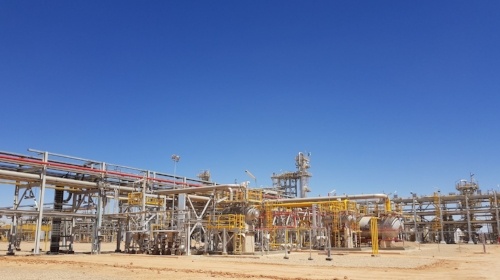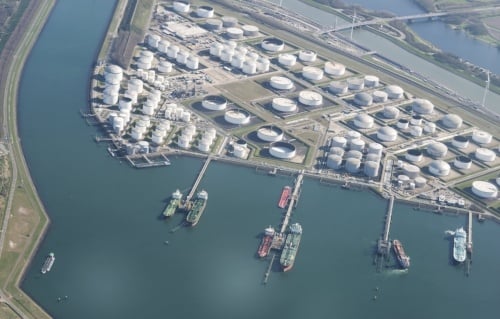1 min read
Top Seven Oil & Gas Hedging Mistakes
As energy hedging consultants, we're often asked: What are the most common mistakes oil & gas producers make regarding hedging and risk management....

While not nearly as unnerving as the decline from $13 in the summer of 2008 to under $3 in 2009, the recent volatility, amid a low price environment, in the natual gas markets has sent a clear message to natural gas producers as it relates to hedging. A similar statement can be made regarding the crude oil roller coaster that took us from $50 to $145 and back to $35 in only two years and has since proven to be quite volatile between $40 and $55. As clear as the messages have been, they nonetheless have fallen on many deaf ears.
Unhedged and underhedge producers, and often their lenders and investors, are often quick to mention how hedging reduces their upside, arguably because of the structures of their hedges, but this group has been pretty quiet since both crude oil and natural gas prices have settled into the "lower for longer" price band, leaving the unhedged or underhedged producer facing the music, yet again.
There are several lessons to be learned from these events. The extent to which producers, lenders and investors and other industry participants actually learn from these lessons, and act accordingly, will only be told by time. Historically, many producers have been quick to forget how close they have come to facing serious financial problems as a result of low prices. With any luck the bankruptcies, restructurings and sleepness nights of the past two years will change the perspective of at least a few folks.
While the energy markets are often "shocked" by events such as the bankruptcy of Enron, Lehman Brothers, SemGroup and OW Bunker, the same can't be said about E&P companies as independent oil & gas producers seem to make the same mistakes cycle after cycle. It's been this way since the '80's and will likely remain this way for the foreseeable future. That being said, there have never been so many different and sound ways for an oil and gas producer to hedge their commodity price risk as there are today, albeit at less than ideal prices.
Regarding the problems that emerge when oil and gas prices increase or decrease significantly, the clearest messages are as follows:
As obvious as these lessons are, the number of producers that do not fully understand their hedges is astounding. Few companies run in depth models to determine what a hedge will do under various market conditions. Many prospective clients are surprised when we suggest that it is crucial that these models are not only develop and analyzed before executing a trade but also updated and analyzed on a regular basis. Likewise, few producers shy away from aggressive "lottery" hedge if a major bank or trading company is recommending said hedge as a sound strategy, often accompanied by a well-polished marketing piece.
Make no mistake; these issues are not limited to natural gas and crude oil producers. Major, multi-national corporations, as well as government entities, have been pushed to the brink of bankruptcy because they engaged in highly speculative trading, masked as hedging, without understanding the full implications of their "hedge" positions. AIG, Orange County, Long Term Capital Management and Metallgesellschaft are but a few of the names that come to mind.
Another point ought to be made clear here. While the press has generally only focused on a few companies that have experienced significant hedging losses, not to be confused with interim mark-to-market losses, there have been many more companies, including many oil and gas producers, which have experienced financial difficulties due to their hedge positions. The others simply didn't garner the attention of the media.
There are many other lessons to be learned, such as, costless collars are not the holy grail of hedging. Costless collars, if not properly monitored and, most often, dynamically hedged, can expose producers to significant, long-term risks that can potentially destroy a company. Imagine a crude oil producer, in late December 2008, when the prompt NYMEX WTI contract was trading in the $35 range, concerned that crude oil prices would remain low or trade well below $35. As such the producer entered into a costless collar, consisting of a $27.50 put option (floor) and a $47.50 call option (ceiling) for the 2009 calendar year. NYMEX WTI prices averaged $62/BBL in 2009, which means the producer left $14.50/BBL on the table, not to mention tying up a line of credit until the positions expired at the end of the year. If this producer had received sound hedging advice, they would have most likely purchased an outright put option or, at the very least, utilized a three way option which would have included the purchase of an additional call option with a higher strike price to mitigate the exposure of being short the $47.50 call option.
Yes, it's easy to "Monday morning quarterback" a situation like this but if this producer, or their hedging advisor, had taken the time to run a proper statistical model prior to initiating the costless collar, the model would have shown, without a doubt, that purchasing outright put options was a much sounder strategy than entering into a "costless" collar. Sure, simply buying put options would have meant paying an upfront premium but, the cost of buying options, is often negligible when compared to risk incurred when a producer utilizes a costless collar, especially when the potential implications of the call(s) going deep in-the-money is not fully understood, not to mention the foregone opportunity cost.
To clarify, costless collars are often a sound hedging tool for many oil and gas producers but they are rarely fully understood or properly quantified before the confirmation sheet has already been signed, sealed and delivered. Perhaps better said, from a probability perspective, costless collars are a much sounder producer hedging strategy in a high price envionment (a high price environment defined by statiics, not opinion), than a low price environment.
Other hedging strategies, if not properly utilized and fully understood, can be similarly problematic, including synthetic options, participatory swaps, etc. Another lesson to be learned is that some of the exotic hedging strategies that have been marketed by banks and trading companies in recent years, such as "knock-in" or "knock-out" options, are rarely, if ever, true cash flow or economic hedges. Having said that, many trading desks have successfully marketed these structures over the past few years to more than a few "aggressive" producers. How a CFO can explain and justify a knock-in or knock out option to his/her shareholders or debtholders is an entirely different question.
In conclusion, oil and gas hedging need not be a complex undertaking but it requires thoroughly examining the past as well and the potential for the future via thorough analysis and planning. As always, if we can be of assistance please don't hesitate to contact us.

1 min read
As energy hedging consultants, we're often asked: What are the most common mistakes oil & gas producers make regarding hedging and risk management....

2 min read
As energy hedging advisors, we often see many market participants, make significant, if not catastrophic, errors related to their hedging strategies....

4 min read
I spent the holidays on the road between Houston and Nebraska visiting family. The trip took me though some rural communities where it is common to...